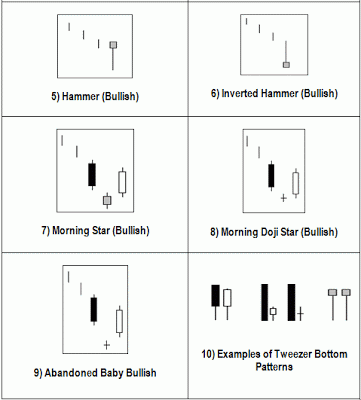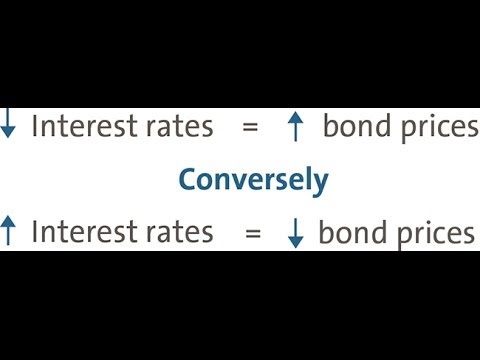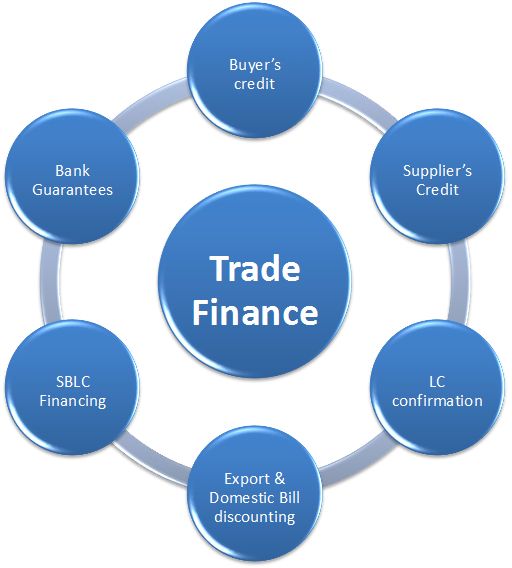Contents:


While improving its asset turnover ratio and trying to maintain consistent cash flows and other business fundamentals. In a “heavy industry,” such as automobile manufacture, where a big capital expenditure is necessary to do business, the fixed asset turnover ratio is most useful. Other businesses, such as software development, have such low fixed asset investment that the ratio is useless. Both of most of these financing are used to fund the operations of the corporate. Current ratio is steadiness-sheet financial performance measure of company liquidity.

The asset turnover ratio does not offer all the information necessary for thorough research. Indication of asset impairment – The ratio can indicate asset impairment. For instance, a sudden drop in the ratio may indicate that the company assets are losing their ability to generate income. Remember, different industries can have different asset turnover ratio values.
Asset Turnover Ratio – Meaning, Formula, Example, Advantages, And More
The sale will subsequently generate substantially additional cash than the value of inventory on the stability sheet. Low current ratios can also be justified for businesses that can gather money from prospects lengthy before they need to pay their suppliers. The total asset turnover ratio is the asset administration ratio that is the summary ratio for all the opposite asset administration ratios covered on this article.
Consult a professional before relying on the information to make any legal, fixed asset ratio formula or business decisions. Khatabook will not be liable for any false, inaccurate or incomplete information present on the website. Of a company whose asset turnover ratio has been declining over time. However, a lower ratio could indicate inefficiencies within company operations (e.g. billing and store management). Many creditors and investors use this ratio analysis to evaluate a company’s potential growth and liabilities. A high percentage of total asset turnover indicates that your asset is doing effectively for you, while a lower ratio indicates the opposite.
Investors and creditors also get the idea of how a company is managed and uses its assets to produce products and sales. Say, you’re an investor and being the one who is spending his money, you’ll want to keep a regular check on the use of both assets viz. The asset turnover ratio calculates the online sales as a share of its total property. Sometimes, traders and analysts are extra excited about measuring how rapidly an organization turns its fixed assets or current assets into gross sales. The working capital ratio measures how nicely an organization uses its financing from working capital to generate sales or revenue.
Current ratio refers to a technique that measures the capability of a business to meet its short-term obligations that are due within a year. The current ratio considers the weight of the total current assets versus the total current liabilities. The total asset turnover ratio calculates net sales as a percentage of assets to show how many sales are generated from each penny of company assets. The asset turnover ratio is a measure that contrasts revenues with assets. A company with a high asset turnover ratio may attract higher investors. Like other indicators, the asset turnover ratio works best when compared to companies in the same sector.
You should assess the company’s assets value at the end of each year. As an example, you would have assets if you were a business owner. It is paramount to compare this ratio only to companies in the same sector or industry. All efforts have been made to ensure the information provided here is accurate.
Return on equity (ROE)
The working capital ratio is derived by dividing the current assets by current liabilities. Also, selling assets to deal with the falling growth could artificially boost the ratio. Other factors could also impact the asset turnover ratio during interim periods (such as comparing the retailer’s quarterly results). For evaluating companies, asset turnover ratios can be a valuable tool. The ratio of turnover is a useful tool to analyse your business performance.
Potential collectors use this ratio as a measure of a company’s liquidity and the way simply it could service debt and cover brief-term liabilities. The accounts receivable turnover is very similar to the inventory turnover ratio. It determines the number of times a company collects cash from its debtors. A high accounts receivable turnover is favourable since it means that a company collects cash frequently. One of the most widely used ratios in fundamental analysis, the return on equity ratio helps you determine a company’s ability to make profits using just the funds from its shareholders. It gives you a fair idea of the returns a company generates for every hundred rupees invested by the shareholders.
Current Ratio: How to Use It in Your Business – The Motley Fool
Current Ratio: How to Use It in Your Business.
Posted: Fri, 05 Aug 2022 07:00:00 GMT [source]
Inventory number of days determines the time taken by a company to convert its inventory into cash through sales. A lower value for ‘inventory number of days’ means that a company is able to quickly sell its goods for cash, which effectively means that its goods are in demand. Funds that a company requires to run its everyday operations are commonly collectively known as working capital. The working capital turnover ratio shows just how much revenue a company makes for every rupee of working capital. A high working capital turnover is favourable, since it means that a company generates more revenue per rupee of working capital.
FAQs on Fixed Assets
For example, If the company has invested large amounts in its assets, then their operating capital will be too high. Therefore, management needs to determine the right amount of investment in each of their assets in order to maintain its efficiency. The asset turnover ratio compares the company’s sales to its asset base. It assesses a company’s ability to create profit from its assets.
The debt to equity ratio determines the proportion of debt to that of the equity in a company. So, the inventory turnover ratio has been calculated like this. A current ratio greater than one indicates that the company has the financial resources to remain solvent in the short-term time frame. This ratio is often analyzed alongside debt to equity ratio and Operating profit Margin to get a better picture of the strength of the business. Assets tend to play a vital role in ensuring profitability for a business venture. In a broader sense, assets can be categorised as the ‘receivables’ or the income generated.
What is ‘Asset Turnover Ratio’
While the asset turnover ratio considers average total belongings within the denominator, the mounted asset turnover ratio seems at solely fastened assets. The average collection period determines the time it takes for a company to collect cash from its debtors. A lower average collection period is favourable since it effectively means that the company is able to collect cash quickly. The fixed assets turnover can be calculated using this formula.
Similar to the debt to equity ratio, this ratio determines the proportion of debt to that of the assets of a company. It is a leverage ratio that gives you information on the percentage of assets of a company that are financed through debt. A comparison of asset turnover ratios might not prove useful if you have local suppliers and your trucks are running the supplies. Still, your competitor is getting suppliers from out-of-state with their trucks. This would allow you to compare your business’ performance over time.
More Financial Statement Analysis Questions
Companies with high fixed asset turnover may still experience losses because it does not reflect a stable cash flow. The amount a buyer owes is listed on the company’s books beneath accounts receivable. This is a sound enterprise follow, because extending credit score gives prospects flexibility when making purchases and helps drive gross sales. However, if prospects don’t pay in a timely manner, the enterprise can find itself with a lot of money tied up and unavailable.
What Do Efficiency Ratios Measure? – Investopedia
What Do Efficiency Ratios Measure?.
Posted: Sat, 25 Mar 2017 14:01:02 GMT [source]
The accounts receivable turnover ratio measures the common time it takes for a enterprise to obtain cost from clients. Most frequent examples of liquidity ratios embody current ratio, acid check ratio , money ratio and working capital ratio. Your firm’s asset turnover ratio helps you perceive how productive your small business has been. The asset turnover ratio measures the value of an organization’s sales or revenuesrelative to the value of its property. The asset turnover ratio can be utilized as an indicator of the effectivity with which an organization is utilizing its assets to generate income. The complete asset turnover ratio is a general effectivity ratio that measures how effectively a company makes use of all of its assets.
- It measures how efficiently a company using its working capital requirements to support revenue sales and growth.
- This ratio measures the corporate’s monetary efficiency for both the owners and the managers as it pertains to the turnover of inventory.
- The working capital ratio is derived by dividing the current assets by current liabilities.
- The information, product and services provided on this website are provided on an “as is” and “as available” basis without any warranty or representation, express or implied.
For comparison of company’s performance to similar company’s or industries to understand the position in the market. A comparative balance sheet contains side-by-side information about the company’s assets and liabilities over different periods of time. One of the most popular leverage ratios, the debt to equity ratio determines the proportion of debt to that of the equity in a company. A debt to equity ratio greater than 1 essentially means that a company has more debt than equity, while a ratio lower than 1 signifies that the equity portion is more than debt. A debt to equity ratio of 1 indicates that a company has equal portions of debt and equity. Generally, a low asset turnover ratio suggests problems with surplus production capacity, poor inventory management and bad tax collection methods.

The ratio is expressed in percentages and can be calculated using this formula. Fixed assets vary significantly from one company to another and from one industry to another, so it is relevant to compare ratios of similar types of businesses in the same industry. You can only use ratios when comparing them with the same ratio from the past or another company in the same industry. The industry ratio can also help make the comparison, but it will not be as accurate because of how businesses in the same industry can operate. Add the ending assets to the beginning assets to calculate the average total assets.
Investor won’t be much interested in collaborating with wiki-tech. However, if their net sales increase to INR 100,000, their ratio spikes to 1.3 and this will attract potential investors. From this ratio, Investors can determine whether a company’s management is making enough money from sales. It calculated to determine the direct cost required to generate a company’s revenue. A debt and profitability ratio used to determine how easily a company can pay interest on its outstanding debt. For HUL, the total of current assets comes up to Rs. 11,908 crores, while the total of current liabilities comes up to Rs. 9,104 crores.
Activity Ratio – to determine the efficiency of the organization in utilizing its assets for generating revenue. It shows operating efficiency of management by comparing the total operating expense to net sales. Measure how profit company makes from sale of goods and services after deducting direct costs. Angel One has created short courses to cover theoretical concepts on investing and trading. These are by no means indicative of or attempt to predict price movement in markets. This indicates that the company takes roughly 13 days to collect payments from its debtors.
It measures of financial performance of company which takes the use of assets into account. A measure of company’s financial risk and expresses the amount of a company’s debt in terms of its equity. There are different types of balance sheets you may come across while performing fundamental analysis for the companies you are interested in. Here is a closer look at the common types of balance sheets. A debt to asset ratio of 59.02% indicates that around 59.02% of assets owned by HUL is financed using debt capital. The higher the ROCE, the better a company’s profitability is.